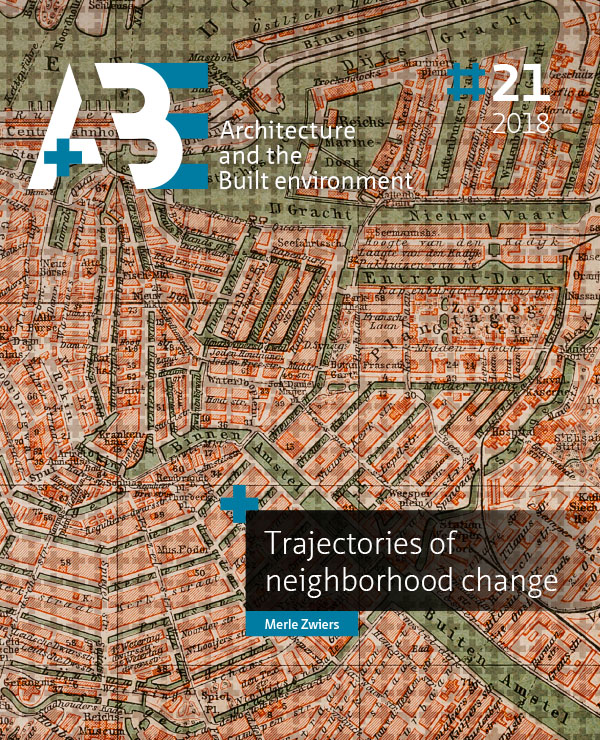Trajectories of neighborhood change
DOI:
https://doi.org/10.7480/abe.2018.21.2568Keywords:
neighborhood, neighbourhood, urban, social, social changeAbstract
Neighborhoods represent a scale at which inequalities are reflected in the unequal spatial distribution of ethnic and income groups across urban space. In many cities, the rich reside in high-quality neighborhoods in favorable locations while the poor are concentrated in disadvantaged areas (Hulchanski, 2010; Van Eijk, 2010). However, neighborhoods are not static entities and spatial patterns of socioeconomic and ethnic inequality shift over time as a result of processes of neighborhood change. Neighborhoods can develop in different ways: (1) they can gentrify which is characterized by rising house prices and the replacement of lower income groups by higher income groups (Hochstenbach & Van Gent, 2015; Newman & Wyly, 2006; Slater, 2006); (2) neighborhoods can decline which is indicated by physical deterioration and declining house prices and the succession of higher income groups by lower income groups (Grigsby et al., 1987; Prak & Priemus, 1986; Van Beckhoven et al., 2009); (3) neighborhoods can remain stable in their population composition and/or overall status for longer periods of time (Meen et al., 2013; Tunstall, 2016).
There are two empirical gaps in the literature on neighborhood change that this dissertation addresses. First, there has been a lack of longitudinal studies. Many studies on neighborhood change take on a relatively short-term perspective and reduce change to the difference between two points in time. While the literature has been dominated by case-studies on gentrification or decline, fuelling the assumption that gentrification and decline are widespread processes that quickly transform neighborhoods and cities, a growing body of research suggests that neighborhoods are rather ‘slothful’ and that neighborhood change takes time to take effect (Tunstall, 2016; Meen et al., 2013). Overall, we have little insight into the extent to which gentrification and decline are exceptional cases, in addition to, the prevalence and rate of change across all neighborhoods over time (cf. Tunstall, 2016).
Second, residential mobility is often seen as the most important driver of neighborhood change. However, residential mobility is shaped by structural factors such as the housing stock, local housing markets, and government policy (Meen et al., 2013; Nygaard & Meen, 2011). Moreover, researchers have argued that residential mobility should be understood in relation to demographic and in-situ change, which can also play an important role in processes of neighborhood change (Bailey, 2012; Finney & Simpson, 2009; Teernstra, 2014). The relative impact of the housing stock and differentpopulation dynamics on neighborhood change has however received little attention in the literature to date.
This dissertation contributes to the literature on longitudinal neighborhood change, both theoretically and methodologically. Theoretically, it provides insight into diverging pathways of neighborhood change over time, illustrating how different mechanisms interact to shape the urban geography along socioeconomic and ethnic lines. The path-dependent role of the housing stock is analyzed, in addition to the extent to which changes to the housing stock as a result of urban restructuring affect residential mobility and neighborhood change. Moreover, this dissertation investigates patterns of ethnic segregation over time and explores the relative impact of residential mobility and demographic change. Methodologically, this dissertation explores innovative methods for the analysis of neighborhood trajectories, broadening the scope of statistical methods for the field of neighborhood change research.
This dissertation uses individual-level administrative data from the System of Social statistical Datasets (SSD) provided by Statistics Netherlands. The SSD contains longitudinal geocoded data on the full Dutch population, as well as information on the built environment. As such, the SSD allows for the analysis of the relationship between the housing stock and population change in processes of neighborhood change. Neighborhoods are operationalized using 500 by 500 meter grids, which are the most consistent low spatial scale over time. Three out of four chapters focused on the 1999 to 2013 time period, while chapter 3 covered the 1971 to 2013 period. This dissertation employed innovative methodologies to analyze trajectories of neighborhood change over time. Chapter 3 presents a combination of sequence analysis and a tree-structured discrepancy analysis that allows for the visualization of neighborhood pathways and its relation to their contexts. Chapter 5 uses a Latent Class Growth Model (LCGM) to categorize neighborhoods based on similarities in the timing and pace of change over time. Both methodologies have proven to be valuable tools for the identification of diverging neighborhood pathways over time.

